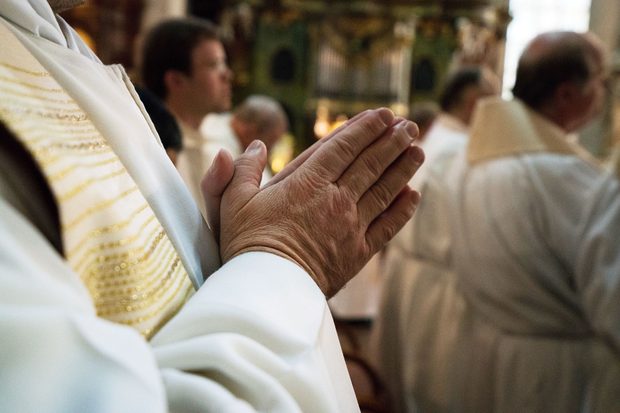What is Gregorian chant?
Gregorian chant is a sacred hymn in Latin (and occasionally Greek) that has been used in the Roman Catholic Church for centuries. From the beginning, Gregorian chant has two key distinguishing features.
- It is unaccompanied, meaning there are no musical instruments accompanying the singer.
- It is monophonic, meaning that all singers follow only one melodic line. This later contrasted with religious and secular music, in which different voices (soprano, alto, etc.) could sing different, harmonious, vocal lines.
When was Gregorian chant invented?
The peak period for the development of Gregorian chant was the 9th and 10th centuries in Europe.
Confusingly, the form takes its name Pope Gregory 1He is often credited with the invention of Gregorian chant during his lifetime. This was much earlier, in the late 6th century, but today’s scholars believe that Gregorian chant developed later and was drawn from the singing tradition of Rome and Gaul (modern France).
How is Gregorian chant performed? And what types of sounds is it for?
Gregorian chant was originally sung in one of two settings: by men and women in religious orders, monasteries, and other buildings; and in the choirs (boys or men) in churches.
Primarily, Gregorian chant was performed during the Roman Catholic Mass, or during the monastic office – a sequence of religious services, or times of prayer, among religious communities.
Gregorian chant is not mandatory in either setting. However, it is still the most suitable music for worship in the Catholic Church.
How did Gregorian chant influence later classical music?
This beautiful and spiritual form of music had a great influence on the styles of both medieval and renaissance music. For example, the modern way Music rod Illustrated directly from Gregorian musical notation. of Bass Cliff And the flat, natural, and sharp accidentals all come from the Gregorian description.
Melodies from Gregorian chant also found their way into hymns and hymns, and helped shape the Middle Ages and Renaissance. Polyphony. Chants are often used as a song Firm, or a fixed melody in which a polyphonic chorus develops. Marian antiphons, especially Alma Beza’s motherThey were often arranged by Renaissance composers.
Later, the Catholic Church introduced polyglots (in which different groups sang different tunes) to replace the monologues during the liturgy – parts of the liturgy that remained unchanged throughout the year.
Elsewhere, including composers William Byrd And Thomas Louis de Victoria wrote the polyphonic settings of the Propers—parts of the liturgy that changed each day of the church year. These polyphonic arrangements often include traces of the original Gregorian chant before being replaced by polyphonic arrangements.
When and why did Gregorian chant enjoy a renaissance?
At the end of the 20th century, Gregorian chant became increasingly popular, reaching audiences far beyond those that could only hear this beautiful music in churches, monasteries, and convents. Part of the new surge of interest was thanks to the German band Enigma, who included samples of Gregorian chant on their 1990 hit single. Sadness (part one).
A few years later came the album SingIt features Gregorian chant performed by the Benedictine monks of Santo Domingo de Silos in Spain. The music was actually recorded in the 1970s, but it has become popular now. And what a shot. Sing Gregorian chant became the best-selling album of all time.
Three beautiful pieces of Gregorian chant
Alma Beza’s mother
This beautiful melody is one of the four ‘Mary Antiphons’ – hymns of praise to the Virgin Mary, sung in religious communities at the last Prater service of the day, Compline.
Hello Queen of Heaven
Along with the ‘Alma Redemptoris Mater’ above, this is one of four Marian antiphons sung at the end of the day. Again, it is short, eloquent and beautiful.
Kyrie Eleison
Meaning ‘Lord, have mercy’, the ‘Kyrie Eleison’ (or simply ‘Kyrie’) is a prayer recited during a Roman Catholic Mass. Traditionally, it was often set to Gregorian chant.
Photo: Giles Clarke / Getty Images



Comments are closed.